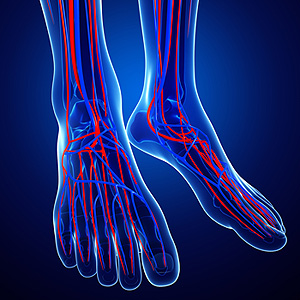Blog
Different Types of Heel Pain
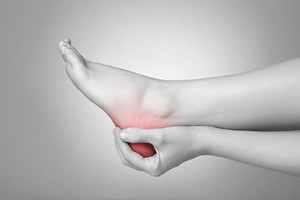 Heel pain affects roughly 1 out of every 10 people in the world, particularly runners and those between the ages of 40 and 60. Heel pain generally builds up and worsens over time, and most commonly it is a result of damage to the plantar fascia. The plantar fascia is the band of tissue that runs along the sole of the foot and connects the heel bone to the toes. Any damage, whether it is sudden or reoccurring over time, will cause the plantar fascia to thicken, along with the surrounding tissues and heel bone. This is known as plantar fasciitis. Other less common sources of heel pain include stress fractures, bursitis, wearing of the fat pad under the heel, or a heel spur. If you are suffering from heel pain, it is important to consult with a podiatrist to receive a proper diagnosis. Once the source of the pain is determined, your podiatrist will be able to provide treatment options for your specific condition.
Heel pain affects roughly 1 out of every 10 people in the world, particularly runners and those between the ages of 40 and 60. Heel pain generally builds up and worsens over time, and most commonly it is a result of damage to the plantar fascia. The plantar fascia is the band of tissue that runs along the sole of the foot and connects the heel bone to the toes. Any damage, whether it is sudden or reoccurring over time, will cause the plantar fascia to thicken, along with the surrounding tissues and heel bone. This is known as plantar fasciitis. Other less common sources of heel pain include stress fractures, bursitis, wearing of the fat pad under the heel, or a heel spur. If you are suffering from heel pain, it is important to consult with a podiatrist to receive a proper diagnosis. Once the source of the pain is determined, your podiatrist will be able to provide treatment options for your specific condition.
Many people suffer from bouts of heel pain. For more information, contact one of our podiatrists of James Kutchback, DPM, CWS-P. Our doctors can provide the care you need to keep you pain-free and on your feet.
Causes of Heel Pain
Heel pain is often associated with plantar fasciitis. The plantar fascia is a band of tissues that extends along the bottom of the foot. A rip or tear in this ligament can cause inflammation of the tissue.
Achilles tendonitis is another cause of heel pain. Inflammation of the Achilles tendon will cause pain from fractures and muscle tearing. Lack of flexibility is also another symptom.
Heel spurs are another cause of pain. When the tissues of the plantar fascia undergo a great deal of stress, it can lead to ligament separation from the heel bone, causing heel spurs.
Why Might Heel Pain Occur?
- Wearing ill-fitting shoes
- Wearing non-supportive shoes
- Weight change
- Excessive running
Treatments
Heel pain should be treated as soon as possible for immediate results. Keeping your feet in a stress-free environment will help. If you suffer from Achilles tendonitis or plantar fasciitis, applying ice will reduce the swelling. Stretching before an exercise like running will help the muscles. Using all these tips will help make heel pain a condition of the past.
If you have any questions, please feel free to contact our offices located in The Woodlands and Woodville, TX . We offer the newest diagnostic and treatment technologies for all your foot care needs.
Who Is Prone to Developing Neuropathy?
The medical condition that is known as neuropathy can be a common ailment among diabetic patients. It can develop as a result of excessively high sugar levels in the bloodstream and affects more than fifty percent of people who are diabetic. The most common symptoms are tingling sensations, or the feet may feel numb. This may lead to the inability to feel cuts, bruises, or wounds that develop on the feet, and this can cause significant complications when left untreated. There may be existing medical conditions that can cause neuropathy. These can include elevated cholesterol levels and high blood pressure. If you are experiencing numbness or pain in your feet, it is strongly suggested that you speak with a podiatrist who can properly diagnose and treat neuropathy.
Neuropathy
Neuropathy can be a potentially serious condition, especially if it is left undiagnosed. If you have any concerns that you may be experiencing nerve loss in your feet, consult with one of our podiatrists from James Kutchback, DPM, CWS-P. Our doctors will assess your condition and provide you with quality foot and ankle treatment for neuropathy.
What Is Neuropathy?
Neuropathy is a condition that leads to damage to the nerves in the body. Peripheral neuropathy, or neuropathy that affects your peripheral nervous system, usually occurs in the feet. Neuropathy can be triggered by a number of different causes. Such causes include diabetes, infections, cancers, disorders, and toxic substances.
Symptoms of Neuropathy Include:
- Numbness
- Sensation loss
- Prickling and tingling sensations
- Throbbing, freezing, burning pains
- Muscle weakness
Those with diabetes are at serious risk due to being unable to feel an ulcer on their feet. Diabetics usually also suffer from poor blood circulation. This can lead to the wound not healing, infections occurring, and the limb may have to be amputated.
Treatment
To treat neuropathy in the foot, podiatrists will first diagnose the cause of the neuropathy. Figuring out the underlying cause of the neuropathy will allow the podiatrist to prescribe the best treatment, whether it be caused by diabetes, toxic substance exposure, infection, etc. If the nerve has not died, then it’s possible that sensation may be able to return to the foot.
Pain medication may be issued for pain. Electrical nerve stimulation can be used to stimulate nerves. If the neuropathy is caused from pressure on the nerves, then surgery may be necessary.
If you have any questions, please feel free to contact our offices located in The Woodlands and Woodville, TX . We offer the newest diagnostic and treatment technologies for all your foot care needs.
How to Care for Orthotics
 The purpose of wearing orthotics is to correct possible foot structure complications. Orthotics are most effective when they are prescribed, as this can help to achieve the right combination of flexibility and rigidity. It can take time for your feet to get used to orthotics, and it is recommended to break them in gradually. Care tips for having your orthotics last as long as possible include cleaning them with a damp rag, drying then naturally if they become wet, and it is helpful to always put socks on while wearing them. If you are experiencing pain in your feet, it is strongly advised that you consult with a podiatrist who can determine if orthotics are right for you.
The purpose of wearing orthotics is to correct possible foot structure complications. Orthotics are most effective when they are prescribed, as this can help to achieve the right combination of flexibility and rigidity. It can take time for your feet to get used to orthotics, and it is recommended to break them in gradually. Care tips for having your orthotics last as long as possible include cleaning them with a damp rag, drying then naturally if they become wet, and it is helpful to always put socks on while wearing them. If you are experiencing pain in your feet, it is strongly advised that you consult with a podiatrist who can determine if orthotics are right for you.
If you are having discomfort in your feet and would like to try orthotics, contact one of our podiatrists from James Kutchback, DPM, CWS-P. Our doctors can provide the care you need to keep you pain-free and on your feet.
What Are Orthotics?
Orthotics are inserts you can place into your shoes to help with a variety of foot problems such as flat feet or foot pain. Orthotics provide relief and comfort for minor foot and heel pain but can’t correct serious biomechanical problems in your feet.
Over-the-Counter Inserts
Orthotics come in a wide variety of over-the-counter inserts that are used to treat foot pain, heel pain, and minor problems. For example, arch supports can be inserted into your shoes to help correct overarched or flat feet, while gel insoles are often used because they provide comfort and relief from foot and heel pain by alleviating pressure.
Prescription Orthotics
If over-the-counter inserts don’t work for you or if you have a more severe foot concern, it is possible to have your podiatrist prescribe custom orthotics. These high-quality inserts are designed to treat problems such as abnormal motion, plantar fasciitis, and severe forms of heel pain. They can even be used to help patients suffering from diabetes by treating foot ulcers and painful calluses and are usually molded to your feet individually, which allows them to provide full support and comfort.
If you are experiencing minor to severe foot or heel pain, it’s recommended to speak with your podiatrist about the possibilities of using orthotics. A podiatrist can determine which type of orthotic is right for you and allow you to take the first steps towards being pain-free.
If you have any questions, please feel free to contact our offices located in The Woodlands and Woodville, TX . We offer the newest diagnostic and treatment technologies for all your foot care needs.
What Is Causing My Ankle Pain?
Pai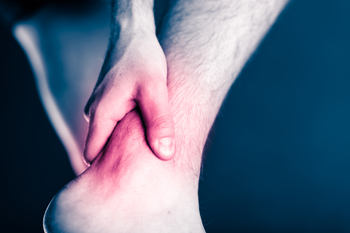 n in the ankle can have a variety of causes. Ankle sprains are the leading causes of ankle pain, and they are a result of the tearing of ligaments that hold the bones together. Sprains are usually a direct result of rolling or twisting the ankle. Arthritis, gout, nerve damage, infections and broken bones can also lead to ankle pain. Those who experience extreme swelling and bruising, or struggle to put weight on the affected ankle, should consult with a podiatrist. If there has been no improvement in the level of ankle pain, that is another sign that you may want to visit a podiatrist. Treatment options that a podiatrist can provide include an ankle brace, medication or orthotics.
n in the ankle can have a variety of causes. Ankle sprains are the leading causes of ankle pain, and they are a result of the tearing of ligaments that hold the bones together. Sprains are usually a direct result of rolling or twisting the ankle. Arthritis, gout, nerve damage, infections and broken bones can also lead to ankle pain. Those who experience extreme swelling and bruising, or struggle to put weight on the affected ankle, should consult with a podiatrist. If there has been no improvement in the level of ankle pain, that is another sign that you may want to visit a podiatrist. Treatment options that a podiatrist can provide include an ankle brace, medication or orthotics.
Ankle pain can be caused by a number of problems and may be potentially serious. If you have ankle pain, consult with one of our podiatrists from James Kutchback, DPM, CWS-P. Our doctors will assess your condition and provide you with quality foot and ankle treatment.
Ankle pain is any condition that causes pain in the ankle. Due to the fact that the ankle consists of tendons, muscles, bones, and ligaments, ankle pain can come from a number of different conditions.
Causes
The most common causes of ankle pain include:
- Types of arthritis (rheumatoid, osteoarthritis, and gout)
- Ankle sprains
- Broken ankles
- Achilles tendonitis
- Achilles tendon rupture
- Stress fractures
- Bursitis
- Tarsal tunnel syndrome
- Plantar fasciitis
Symptoms
Symptoms of ankle injury vary based upon the condition. Pain may include general pain and discomfort, swelling, aching, redness, bruising, burning or stabbing sensations, and/or loss of sensation.
Diagnosis
Due to the wide variety of potential causes of ankle pain, podiatrists will utilize a number of different methods to properly diagnose ankle pain. This can include asking for personal and family medical histories and of any recent injuries. Further diagnosis may include sensation tests, a physical examination, and potentially x-rays or other imaging tests.
Treatment
Just as the range of causes varies widely, so do treatments. Some more common treatments are rest, ice packs, keeping pressure off the foot, orthotics and braces, medication for inflammation and pain, and surgery.
If you have any questions please feel free to contact our offices located in The Woodlands and Woodville, TX . We offer the newest diagnostic tools and technology to treat your foot and ankle needs.
What Can Happen to the Feet as a Result of Being Obese?
 Heel pain may be increased in overweight patients. This can be a result of the added weight that the heels must endure, and chronic foot conditions may develop. The additional weight may cause obese patients to lose interest in exercising, yet exercise is an essential key to losing unwanted pounds. Some patients notice that their foot size has increased, or that their feet have become wider. Additionally, specific forms of arthritis may develop, which can include gout or osteoarthritis. Swelling, pain, and overall foot discomfort may be felt from the strain of the extra weight, in addition to plantar fasciitis and arthritis in the back of the foot. If you are overweight and are experiencing any type of foot pain, it is strongly recommended that you speak to a podiatrist who can properly diagnose and effectively treat this type of pain.
Heel pain may be increased in overweight patients. This can be a result of the added weight that the heels must endure, and chronic foot conditions may develop. The additional weight may cause obese patients to lose interest in exercising, yet exercise is an essential key to losing unwanted pounds. Some patients notice that their foot size has increased, or that their feet have become wider. Additionally, specific forms of arthritis may develop, which can include gout or osteoarthritis. Swelling, pain, and overall foot discomfort may be felt from the strain of the extra weight, in addition to plantar fasciitis and arthritis in the back of the foot. If you are overweight and are experiencing any type of foot pain, it is strongly recommended that you speak to a podiatrist who can properly diagnose and effectively treat this type of pain.
The more you weigh, the harder your feet must work to support your body. If you’re an obese individual and are concerned about your feet, contact one of our podiatrists from James Kutchback, DPM, CWS-P. Our doctors can provide the care you need to keep you pain-free and on your feet.
Obesity and Your Feet
People who are overweight are putting more pressure on their ankles, knees, and hips as well as their feet. This unfortunately can lead to variety of different issues.
Problems & Complications Stemming from Obesity
- When the body is overweight, it tries to compensate by changing the way that it moves. An obese person may lean forward and put extra weight on the wrong part of the foot. This puts unnecessary stress on the feet.
- Obese people are also more likely to develop type II diabetes which is a condition that causes a lot of foot problems. People with diabetes often don’t feel the cuts and sores that they may have on their feet, which can lead to more complicated and severe issues.
- Plantar fasciitis is another foot condition that can be caused by obesity. Plantar fasciitis is an inflammation of the tissue along the bottom of the foot, which causes pain and stiffness while walking and climbing stairs.
If you have any questions please contact our offices located in The Woodlands and Woodville, TX . We offer the newest diagnostic and treatment technologies for all your foot and ankle needs.
Pedicures and Cracked Heels
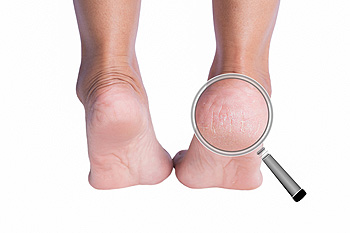 The foot condition that is referred to as cracked heels is a common ailment among many patients. Cracked heels can gradually develop as a result of the aging process, a vitamin deficiency, or medical conditions such as thyroid disease. Additionally, they may develop from wearing shoes that have an open back. This ailment can cause pain and discomfort, and it is suggested that closed shoes are worn. Patients have found mild relief when the feet are soaked in warm water, followed by applying a good moisturizer. Having regular pedicures performed may be helpful in controlling cracked heels. If you suffer from this condition, it is recommended that you speak to a podiatrist.
The foot condition that is referred to as cracked heels is a common ailment among many patients. Cracked heels can gradually develop as a result of the aging process, a vitamin deficiency, or medical conditions such as thyroid disease. Additionally, they may develop from wearing shoes that have an open back. This ailment can cause pain and discomfort, and it is suggested that closed shoes are worn. Patients have found mild relief when the feet are soaked in warm water, followed by applying a good moisturizer. Having regular pedicures performed may be helpful in controlling cracked heels. If you suffer from this condition, it is recommended that you speak to a podiatrist.
Cracked heels are unsightly and can cause further damage to your shoes and feet. If you have any concerns, contact one of our podiatrists from James Kutchback, DPM, CWS-P. Our doctors can provide the care you need to keep you pain-free and on your feet.
Cracked Heels
Cracked heels appear unappealing and can make it harder for you walk around in sandals. Aside from looking unpleasant, cracked heels can also tear stockings, socks, and wear out your shoes. There are several methods to help restore a cracked heel and prevent further damage.
How Do You Get Them?
Dry skin is the number one culprit in creating cracked heels. Many athletes, walkers, joggers, and even swimmers suffer from cracked heels. Age and skin oil production play a role to getting cracked heels as well.
Promote Healing
Over the counter medicines can help, especially for those that need instant relief or who suffer from chronic dry feet.
Wear Socks – Wearing socks with medicated creams helps lock in moisture.
Moisturizers – Applying both day and night will help alleviate dryness which causes cracking.
Pumice Stones – These exfoliate and remove dead skin, which allows for smoother moisturizer application and better absorption into the skin.
Change in Diet
Eating healthy with a well-balanced diet will give the skin a fresh and radiant look. Your body responds to the kinds of food you ingest. Omega-3 fatty acids and zinc supplements can also revitalize skin tissue.
Most importantly, seek professional help if unsure how to proceed in treating cracked heels. A podiatrist will help you with any questions or information needed.
If you have any questions, please feel free to contact our offices located in The Woodlands and Woodville, TX . We offer the newest diagnostic and treatment technologies for all your foot care needs.
What Exercises Can Help Flexible Flat Feet?
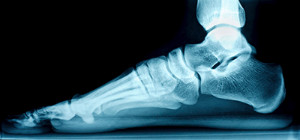 Flexible flat feet refers to a condition where the arch of the foot lies flat on the floor while standing, but reappears when the foot does not bear any weight. For some people, this condition can cause discomfort. Stretching and exercising the feet may help strengthen the arch and reduce pain. One of the exercises you can try is a heel raise. To do this stretch, stand in front of a wall with your feet shoulder-width apart and flat on the floor. You may put your hands on the wall for balance. Raise your heels as high as you can off the floor. Hold for 1-2 seconds and then slowly return to the starting position. Do two sets of 10-20 repetitions. For more information about exercises for flat feet, as well as other treatment options that may work for you, consult with a podiatrist.
Flexible flat feet refers to a condition where the arch of the foot lies flat on the floor while standing, but reappears when the foot does not bear any weight. For some people, this condition can cause discomfort. Stretching and exercising the feet may help strengthen the arch and reduce pain. One of the exercises you can try is a heel raise. To do this stretch, stand in front of a wall with your feet shoulder-width apart and flat on the floor. You may put your hands on the wall for balance. Raise your heels as high as you can off the floor. Hold for 1-2 seconds and then slowly return to the starting position. Do two sets of 10-20 repetitions. For more information about exercises for flat feet, as well as other treatment options that may work for you, consult with a podiatrist.
Stretching the feet is a great way to prevent injuries. If you have any concerns with your feet consult with one of our podiatrists from James Kutchback, DPM, CWS-P. Our doctors will assess your condition and provide you with quality foot and ankle treatment.
Stretching the Feet
Being the backbone of the body, the feet carry your entire weight and can easily become overexerted, causing cramps and pain. As with any body part, stretching your feet can serve many benefits. From increasing flexibility to even providing some pain relief, be sure to give your feet a stretch from time to time. This is especially important for athletes or anyone performing aerobic exercises, but anyone experiencing foot pain or is on their feet constantly should also engage in this practice.
Great ways to stretch your feet:
- Crossing one leg over the others and carefully pull your toes back. Do 10-20 repetitions and repeat the process for each foot
- Face a wall with your arms out and hands flat against the wall. Step back with one foot and keep it flat on the floor while moving the other leg forward. Lean towards the wall until you feel a stretch. Hold for 30 seconds and perform 10 repetitions for each foot
- Be sure not to overextend or push your limbs too hard or you could risk pulling or straining your muscle
Individuals who tend to their feet by regular stretching every day should be able to minimize foot pain and prevent new problems from arising.
If you have any questions please contact our offices located in The Woodlands and Woodville, TX . We offer the newest diagnostic and treatment technologies for all your foot and ankle needs.
Common Symptoms of Stress Fractures
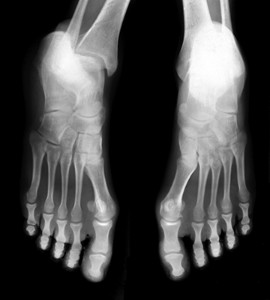 Stress fractures generally occur as a result of an injury that is caused by overusing the foot. A stress fracture is defined as a hairline crack in one of the metatarsal bones in the foot, and can be common among people who participate in running and jumping activities. Pain and discomfort may be felt in the center of the foot, which may also appear swollen. Mild relief may be found when the activity that caused the fracture is stopped, and the affected foot is frequently elevated. A proper diagnosis generally consists of having an X-ray, MRI, or CT scan performed, and is followed by implementing an effective treatment plan. This can consist of resting the foot for several weeks, walking with crutches, or wearing a cast. If you have endured a stress fracture, please consult with a podiatrist who can guide you toward treatment methods that will work for you.
Stress fractures generally occur as a result of an injury that is caused by overusing the foot. A stress fracture is defined as a hairline crack in one of the metatarsal bones in the foot, and can be common among people who participate in running and jumping activities. Pain and discomfort may be felt in the center of the foot, which may also appear swollen. Mild relief may be found when the activity that caused the fracture is stopped, and the affected foot is frequently elevated. A proper diagnosis generally consists of having an X-ray, MRI, or CT scan performed, and is followed by implementing an effective treatment plan. This can consist of resting the foot for several weeks, walking with crutches, or wearing a cast. If you have endured a stress fracture, please consult with a podiatrist who can guide you toward treatment methods that will work for you.
Stress fractures occur when there is a tiny crack within a bone. To learn more, contact one of our podiatrists from James Kutchback, DPM, CWS-P. Our doctors can provide the care you need to keep you pain free and on your feet.
How Are They Caused?
Stress fractures are the result of repetitive force being placed on the bone. Since the lower leg and feet often carry most of the body’s weight, stress fractures are likely to occur in these areas. If you rush into a new exercise, you are more likely to develop a stress fracture since you are starting too much, too soon. Pain resulting from stress fractures may go unnoticed at first, however it may start to worsen over time.
Risk Factors
- Gender – They are more commonly found in women compared to men.
- Foot Problems – People with unusual arches in their feet are more likely to develop stress fractures.
- Certain Sports – Dancers, gymnasts, tennis players, runners, and basketball players are more likely to develop stress fractures.
- Lack of Nutrients – A lack of vitamin D and calcium may weaken the bones and make you more prone to stress fractures
- Weak Bones – Osteoporosis can weaken the bones therefore resulting in stress fractures
Stress fractures do not always heal properly, so it is important that you seek help from a podiatrist if you suspect you may have one. Ignoring your stress fracture may cause it to worsen, and you may develop chronic pain as well as additional fractures.
If you have any questions please contact our offices located in The Woodlands and Woodville, TX . We offer the newest diagnostic and treatment technologies for all your foot and ankle needs.




